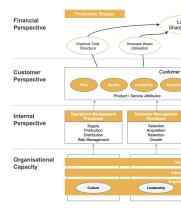How do you make a household budget?
Creating a comprehensive household budget is a key step in mastering money management. A well-crafted budget helps you track your income, expenses, and savings goals, enabling you to make informed financial decisions. Here's a step-by-step guide to crafting a household budget:
1. Gather Financial Information:Collect all relevant financial information, including your monthly income (salaries, investments, side hustles) and expenses (rent/mortgage, utilities, groceries, entertainment).
2. List Your Expenses:Categorize your expenses into fixed and variable categories. Fixed expenses remain relatively constant each month (e.g., rent, insurance), while variable expenses can fluctuate (e.g., dining out, entertainment).
3. Track Spending:Monitor your spending for a month to understand your actual expenses. This helps you identify any discrepancies between your estimates and reality.
4. Calculate Total Income:Sum up all sources of income to determine your total monthly income.
5. Calculate Total Expenses:Add up your fixed and variable expenses to find your total monthly expenses.
6. Set Savings Goals:Decide on your savings goals, such as emergency fund contributions, retirement savings, and other financial objectives.
7. Create Budget Categories:Organize your expenses into budget categories, such as housing, transportation, groceries, entertainment, utilities, debt repayment, and savings.
8. Allocate Funds:Assign specific amounts to each budget category based on your income and priorities. Ensure that your total expenses do not exceed your total income.
9. Make Adjustments:If your expenses exceed your income, review your discretionary spending categories and consider areas where you can cut back. Adjust your budget until your income and expenses balance.
10. Use Budgeting Tools:Consider using budgeting apps, spreadsheets, or online tools to track and manage your budget effectively. These tools can help automate calculations and provide visual representations of your financial situation.
11. Review Regularly:Review your budget regularly, ideally on a monthly basis. Compare your actual spending with your budgeted amounts and make adjustments as needed.
12. Plan for Unexpected Expenses:Include a category for unexpected expenses or emergencies. Having a buffer in your budget helps you handle unforeseen financial challenges without derailing your overall plan.
13. Prioritize Debt Repayment:If you have debts, allocate a portion of your budget towards debt repayment. Prioritize high-interest debts to reduce interest payments.
14. Be Realistic:Ensure your budget is realistic and sustainable. It's okay to have some flexibility and room for enjoyment while still meeting your financial goals.
15. Involve Family Members:If applicable, involve family members in the budgeting process. Transparency and cooperation can lead to better financial decisions and shared responsibility.
16. Celebrate Progress:Celebrate milestones and achievements as you stick to your budget and make progress toward your financial goals.
Remember that a budget is a dynamic tool that can evolve over time. Life changes, unexpected events, and new financial goals may require adjustments to your budget. The key is to maintain a proactive and disciplined approach to money management, using your budget as a guide to help you achieve financial stability and success.












